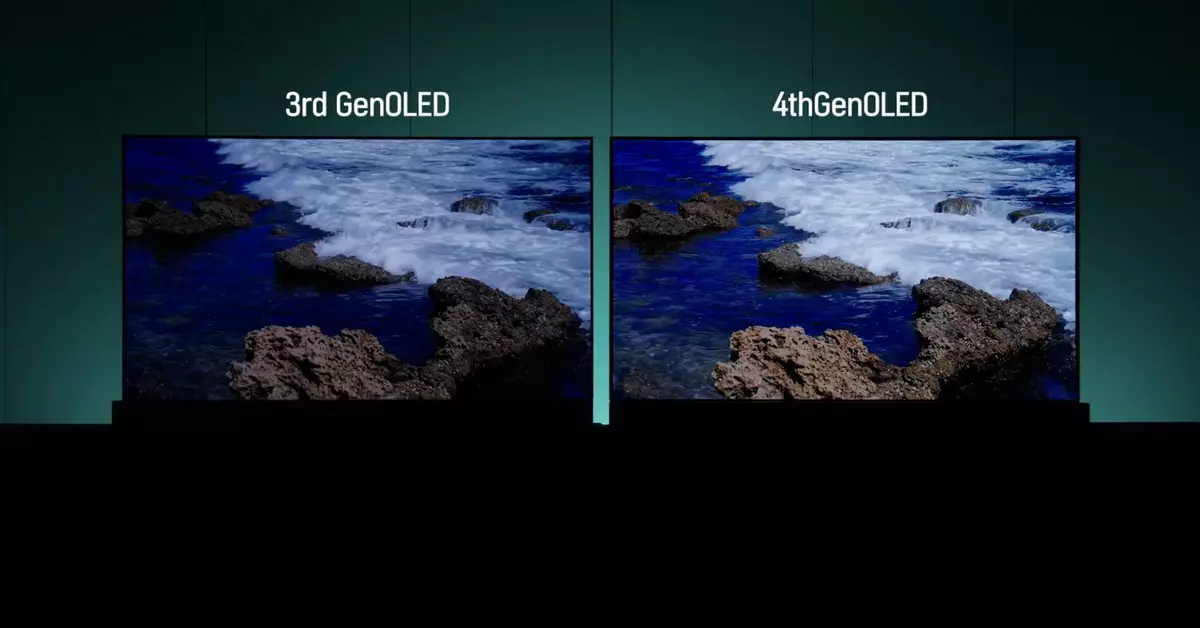The landscape of television displays is ever-evolving, and at the heart of it is OLED technology. This year’s CES event showcased some intriguing revelations from LG Display, albeit in a surprising manner. Instead of LG Display taking the spotlight with its own exhibit, Panasonic emerged as a key player in unveiling LG’s latest innovations, particularly its new OLED panel technology. This unconventional approach has sparked discussions about the future of display technology, particularly the anticipated advancements that will power flagship models in the upcoming years, like Panasonic’s Z95B and LG Electronics’ G5 models.
At the forefront of LG’s innovations is the four-layer tandem OLED design, which LG claims achieves a brightness peak of 4,000 nits, a staggering 33% increase over previous generations. What sets this display apart is its focus on improving brightness while keeping the characteristic features of OLED intact, such as deep blacks and vibrant colors. The mention of artificial intelligence capabilities may evoke skepticism among some experts, but the advancements presented in this panel cannot be dismissed lightly.
The Technical Advancements in OLED Displays
The innovation behind this new panel lies in its Primary RGB Tandem structure. Unlike traditional OLED displays, which typically utilize three layers to emit light, LG’s latest design introduces an additional stack of blue elements alongside independent layers of red and green elements. This four-layer structure not only enhances light production but also optimizes the display’s overall brightness, which is critical for elevating the viewing experience, particularly in brightly lit environments.
In an age where display brightness has become a competitive battleground, LG faces stiff competition from brands like Samsung, which has showcased its QD-OLED technology with its own impressive brightness capabilities. While Samsung opts for a glare-free finish on its displays, LG has chosen a conventional glossy approach but incorporates advanced “ultra-low reflective technology” to mitigate unwanted glare. This steers the conversation around user preferences and the significance of display aesthetics in enhancing visual enjoyment.
The impact of these developments cannot be understated. The ongoing competition in the display market is pushing manufacturers to innovate continuously, leading to brighter, more efficient screens. LG’s claim of energy efficiency improvements, particularly with color brightness reaching up to 2,100 nits—an impressive 40% enhancement over the previous version—demonstrates the brand’s commitment to developing sustainable technologies that do not compromise quality.
However, it is essential to temper expectations when it comes to consumer-ready products. While LG Display’s panel boasts remarkable technical specifications, it remains to be seen whether TV brands like Panasonic will leverage the full potential of this technology in their consumer setups. This uncertainty raises pertinent questions about how much consumers will benefit from such advancements before they transition to mainstream products.
Despite the complexities of the technology and market dynamics, one thing is clear: the future of OLED displays is promising. The latest innovations from LG Display signify substantial strides toward achieving not only superior brightness but also maintaining the defining qualities that have made OLED panels a popular choice among consumers. As prices continue to fluctuate, those serious about quality displays may find it worthwhile to invest in these emerging technologies.
For those keen on staying updated about these advancements, resources such as Digital Trends and HDTVTest provide extensive insights through expert reviews and discussions. By accumulating knowledge about the capabilities and specifications of tech products, consumers will be better equipped to make informed decisions in an ever-complex environment of home theater systems and personal audio technology.
As LG Display continues to refine its OLED technology, consumers should keep an eye on how these innovations reshape the viewing experience and the overall market, ensuring they stay informed as they prepare for the next generation of television technology.


Leave a Reply